Cervidae
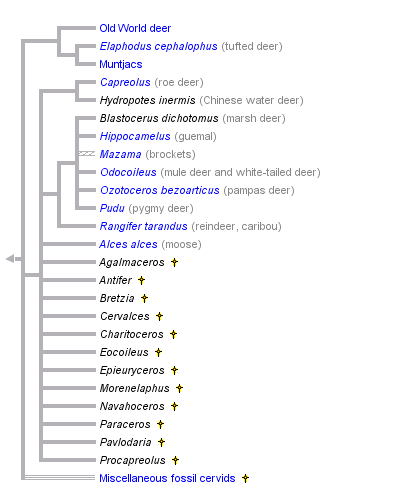


This tree diagram shows the relationships between several groups of organisms.
The root of the current tree connects the organisms featured in this tree to their containing group and the rest of the Tree of Life. The basal branching point in the tree represents the ancestor of the other groups in the tree. This ancestor diversified over time into several descendent subgroups, which are represented as internal nodes and terminal taxa to the right.

You can click on the root to travel down the Tree of Life all the way to the root of all Life, and you can click on the names of descendent subgroups to travel up the Tree of Life all the way to individual species.
For more information on ToL tree formatting, please see Interpreting the Tree or Classification. To learn more about phylogenetic trees, please visit our Phylogenetic Biology pages.
close boxReferences
Boeskorov, G. G. 2002. Taxonomic position of Alces latifrons postremus and relationships of the genera Cervalces and Alces (Alcinae, Artiodactyla, Mammalia). Paleontological Journal 36:660-667.
Breda, M. and M. Marchetti. 2005. Systematical and biochronological review of Plio-Pleistocene Alceini (Cervidae; Mammalia) from Eurasia, Quaternary Sci. Rev. 24:775–805.
Cap, H., S. Aulagnier, and P. Deleporte. 2002. The phylogeny and behaviour of Cervidae (Ruminantia, Pecora). Ethology, Ecology and Evolution 14:199-216.
Cronin, M. A. 1991. Mitochondrial-DNA phylogeny of deer (Cervidae). Journal of Mammalogy 72:533-566.
DeMiguel, D., M. Fortelius, B. Azanza and J. Morales. 2008. Ancestral feeding state of ruminants reconsidered: earliest grazing adaptation claims a mixed condition for Cervidae. BMC Evolutionary Biology 8:13. doi:10.1186/1471-2148-8-13
Di Stefano, G. and C. Petronio. 2002. Systematics and evolution of the Eurasian Plio-Pleistocene tribe Cervini (Artiodactyla, Mammalia), Geol. Romana. 36(2002):311–334.
Douzery,E. and E. Randi. 1997. The mitochondrial control region of Cervidae: evolutionary patterns and phylogenetic content. Molecular Biology and Evolution 14:1154-1166.
Duarte, J. M. B., S. González, and J. E. Maldonado. 2008. The surprising evolutionary history of South American deer. Molecular Phylogenetics and Evolution 49(1):17-22.
Eisenberg, J. F. 1987. The evolutionary history of the Cervidae with special reference to the South American radiation. Pages 60-64 in Biology and Management of the Cervidae. C. M. Wemmer, ed. Smithsonian Institution Press, Washington, D.C.
Eisenberg, J. F. 2000. The contemporary Cervidae of Central and South America. Pages 189-202 in Antelopes, Deer, and Relatives. E. S. Vrba and G. B. Schaller, eds. Yale University Press, New Haven.
Fernández, M. H. and E. S. Vrba. 2005. A complete estimate of the phylogenetic relationships in Ruminantia: a dated species-level supertree of the extant ruminants. Biological Reviews 80(2):269-302.
Fontana,F. and M. Rubini. 1990. Chromosomal evolution in Cervidae. BioSystems 24:157-174.
Gilbert, C., A. Ropiquet, and A. Hassanin. 2006. Mitochondrial and nuclear phylogenies of Cervidae (Mammalia, Ruminantia): Systematics, morphology, and biogeography. Molecular Phylogenetics and Evolution 40(1):101-117.
Groves, C. P. and P. Grubb. 1987. Relationships of living deer. Pages 21–59 in Biology and Management of the Cervidae. C.M. Wemmer, ed. Smithsonian Institution Press, Washington and London.
Grubb, P. 2000. Valid and invalid nomenclature of living and fossil deer, Cervidae. Acta Theriologica 45:289-307.
Hassanin, A. and E. J. P. Douzery. 2003. Molecular and morphological phylogenies of Ruminantia and the alternative position of the Moschidae. Systematic Biology 52 (2):206-228.
Heintz, E. and F. Poplin. 1981. Alces carnutorum (Laugel, 1862) du Pléistocène de Saint-Prest (France). Systématique et evolution des Alcinés (Cervidae, Mammalia). Quartärpaläontologie 4:105–122.
Kahlke, H. D. 1990. On the evolution, distribution and taxonomy of fossil Elk/Moose. Quartärpaläontologie 8:83–106.
McKenna, M. C. and S. K. Bell. 1997. Classification of Mammals Above the Species Level. Columbia University Press, New York.
Meijaard, E. and C. P. Groves. 2004. Morphometrical relationships between South-east Asian deer (Cervidae, tribe Cervini): evolutionary and biogeographic implications. J. Zool. Lond. 263:179–196.
Ohtaishi, N. and H. I. Sheng, eds. 1993. Deer of China. Elsevier Science Publishers B. V., Amsterdam.
Ohtaishi, N. and Y. Gao. 1990. A Review of the distribution of all species of deer (Tragulidae, Moschidae And Cervidae) in China. Mammal Review 20(2-3):125-144.
Randi, E., N. Mucci, M. Pierpaoli, and E. Douzery. 1998. New phylogenetic perspectives on the Cervidae (Artiodactyla) are provided by the mitochondrial cytochrome b gene. Proceedings of the Royal Society of London Series B 265:793-801.
Scott, K. M. and C. M. Janis. 1987. Phylogenetic relationships of the Cervidae and the case for a superfamily "Cervoidea". Pages 3-20 in Biology and Management of the Cervidae. Smithsonian Institution Press, Washington.
Vislobokova, I. 1980. The systematic position of a deer from Pavlodar and the origin of neocervinae. Paleontology J. 3:97–111.
Vrba,E.S . and G. B. Schaller, eds. 2000. Antelopes, Deer, and Relatives. Yale University Press, New Haven.
Webb, S. D. 2000. Evolutionary history of New World Cervidae. Pages 38-64 in Antelopes, Deer, and Relatives. E. S. Vrba and G. B. Schaller, eds. Yale University Press, New Haven.
Whitehead, G. K. 1972. Deer of the World. Constable, London.
Title Illustrations

| Scientific Name | Muntiacus reevesi micrurus |
|---|---|
| Location | captive, Taipei Zoo |
| Specimen Condition | Live Specimen |
| Source | 山羌 (Muntiacus reevesi micrurus) |
| Source Collection | Flickr |
| Image Use |
 This media file is licensed under the Creative Commons Attribution-ShareAlike License - Version 2.0. This media file is licensed under the Creative Commons Attribution-ShareAlike License - Version 2.0.
|
| Copyright | © 2006 Lai Wagtail |
| Scientific Name | Cervus elaphus |
|---|---|
| Creator | Harlan Kredit |
| Specimen Condition | Live Specimen |
| Sex | Male |
| Source Collection | Yellowstone Digital Slide File |
| Scientific Name | Alces alces |
|---|---|
| Location | Silvio O. Conte National Wildlife Refuge, Massachusetts, USA |
| Comments | moose |
| Creator | Ryan Hagerty |
| Specimen Condition | Live Specimen |
| Source Collection | U.S. Fish and Wildlife Service Online Digital Media Library |
| Scientific Name | Odocoileus virginianus |
|---|---|
| Creator | John Stehn |
| Specimen Condition | Live Specimen |
| Sex | Male |
| Source Collection | U.S. Fish and Wildlife Service Online Digital Media Library |
About This Page
Page copyright © 2007
 Page: Tree of Life
Cervidae.
The TEXT of this page is licensed under the
Creative Commons Attribution-NonCommercial License - Version 3.0. Note that images and other media
featured on this page are each governed by their own license, and they may or may not be available
for reuse. Click on an image or a media link to access the media data window, which provides the
relevant licensing information. For the general terms and conditions of ToL material reuse and
redistribution, please see the Tree of Life Copyright
Policies.
Page: Tree of Life
Cervidae.
The TEXT of this page is licensed under the
Creative Commons Attribution-NonCommercial License - Version 3.0. Note that images and other media
featured on this page are each governed by their own license, and they may or may not be available
for reuse. Click on an image or a media link to access the media data window, which provides the
relevant licensing information. For the general terms and conditions of ToL material reuse and
redistribution, please see the Tree of Life Copyright
Policies.
- First online 05 July 2007
- Content changed 05 July 2007
Citing this page:
Tree of Life Web Project. 2007. Cervidae. Version 05 July 2007 (temporary). http://tolweb.org/Cervidae/50875/2007.07.05 in The Tree of Life Web Project, http://tolweb.org/




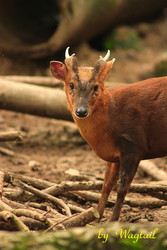
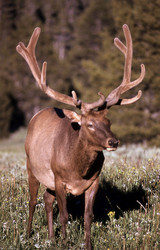
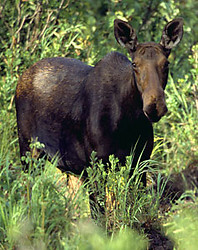
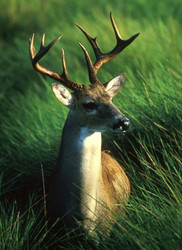





 Go to quick links
Go to quick search
Go to navigation for this section of the ToL site
Go to detailed links for the ToL site
Go to quick links
Go to quick search
Go to navigation for this section of the ToL site
Go to detailed links for the ToL site